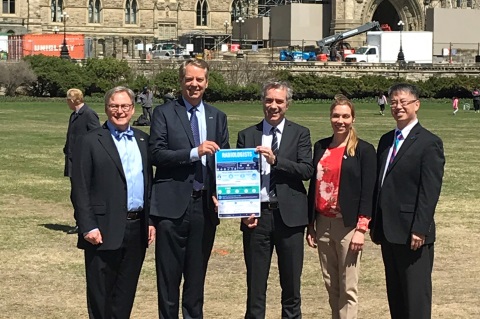By Dr. Michael Barry
Patients know too well that waiting for diagnostic imaging can be emotionally draining for them as well as for their families. Everyone knows someone who is waiting for care and may miss work but how much does it cost patients and the economy?
Reasonable access to medical imaging procedures is a growing problem for Canadians. Having to wait months for MRIs and CTs not only negatively impacts health outcomes but also costs the healthcare system billions of dollars each year. The Canadian Institute for Health Information as well as the Commonwealth Fund have documented Canada’s below-average performance on wait times. Sadly, this is not new.
According to a recent report (June 2019) published by the Conference Board of Canada, excessive waiting (beyond 30 days) for MRI and CT examinations cost the economy $3.54 billion in 2018. In addition, these wait times keep over 380,000 Canadians from work resulting in a loss of $430 million in tax revenue annually.
As our population increases and with a growing ageing population, demand for diagnostic imaging exams will rise. The current stock of imaging equipment is aging and making matters worse, the number of new machines being added is at a 20-year low. It is estimated that 27 per cent of medical imaging equipment is more than 10 years old, which is significantly below international standards of equipment distribution referenced by the Conference Board in the Value of Radiology Part II report. It is recommended that 60 per cent of medical imaging equipment should be less than five years old. Canada is currently not meeting this standard.
Canadians understand that this is a problem and have indicated their support for additional investment in medical imaging equipment.
A poll conducted by Nanos Research revealed that seven in 10 Canadians say that Canada should spend tax dollars to have more current medical imaging equipment.
We need to ensure that patients and providers have access to more efficient technologies that can better diagnose illness and treat disease. By providing proper access to medical imaging tests, patients can be diagnosed and treated sooner resulting in improved health outcomes, less time off work and substantial cost savings to the economy.
What can governments do to respond to this pressure? It’s clear that the capacity for imaging is an issue. So, improving access to more medical imaging equipment would help. In 2004, the federal government, through a transfer to the provinces, did just that, investing close $2.5 billion dollars in new medical imaging equipment. These investments have been done before and can be done again. In fact, the Conservative Party of Canada made a pledge to invest $1.5 billion in medical imaging equipment over four years as one of their key priorities leading up to the 2019 Federal Election.
Patients have an opportunity to make their voices heard. Now is the time to invest in Canadians. By allocating $1.5 billion for medical imaging equipment to the provincial governments over four years, wait times would be reduced and patients would receive the care they deserve. Less waiting, less anxiety, better care and greater economic output would seem to be both right and proper policies for Canada.
Dr. Michael Barry is a Radiologist, Saint John, New Brunswick and President, Canadian Association of Radiologists.


